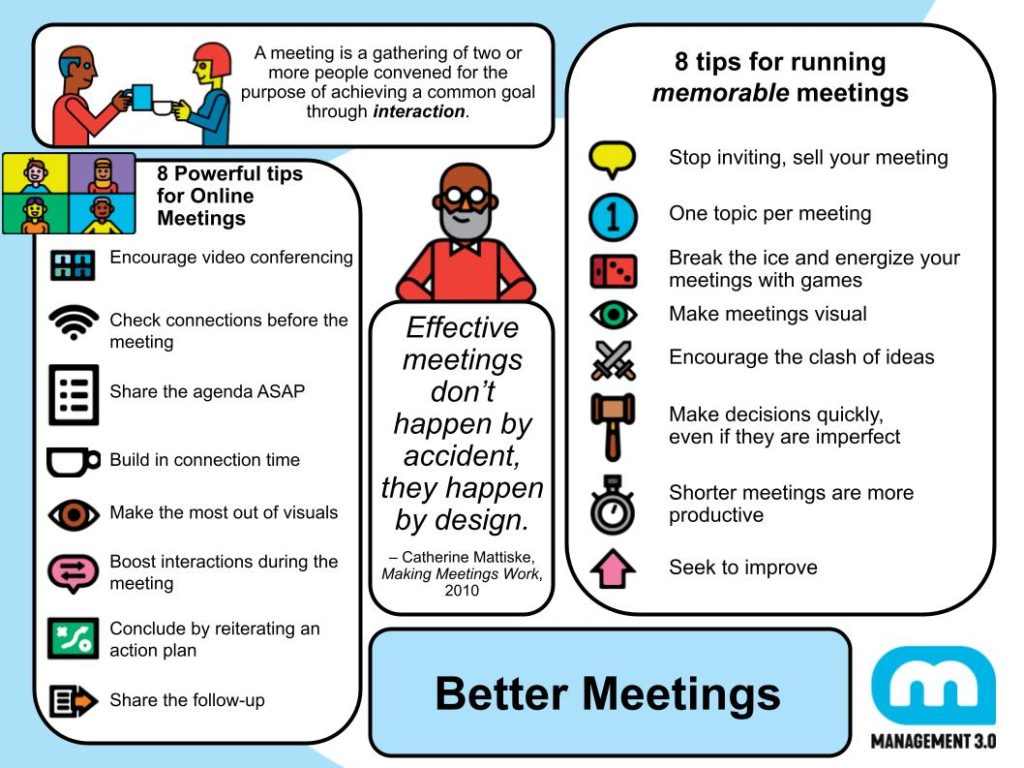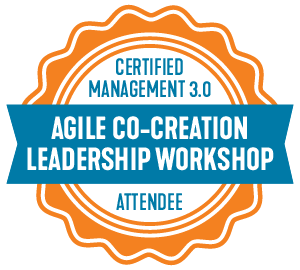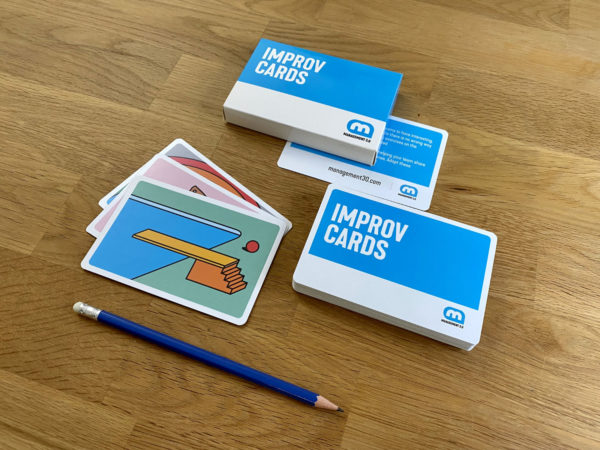Nothing is less exciting than the prospect of a meeting. While some meetings aren’t necessary and others need to be time-boxed better, meeting with our teammates and sharing thoughts, ideas, opinions and solutions is an important exercise. But how do you make them less dreadful? How do you stop having useless meetings? How do you design memorable meetings? These are the questions this Management 3.0 Module looks to answer. The module tackles something that all managers and teammates alike struggle with.
Note: The Better Meetings module received an overhaul in March 2021. Version 3 now includes tips for better virtual meetings.
What will you learn?
- How to set up meetings that add value and people like to attend.
- How to get people involved in meetings when they are quiet and don’t seem so to be engaged.
- How to facilitate meetings with discussions that don’t seem to end and have no outlook on any outcome?
- Learn about the eight tips for running productive in-person meetings
Stop inviting, sell your meeting
When you want people to attend, you should learn to communicate the value of the meeting so that people want to attend. And everyone can participate. If you cannot convince your coworkers to attend your meeting, it is your problem, not theirs!
One topic per meeting
Meetings should not be systematic. They make sense when the topic or issue is challenging or emotional, and there is a need to address the concerns of your co-workers.
Shorter meetings are more productive
Use solution-focused approach: Shorten meetings focus on actions and not on the problem.
Break the ice and energize with games
Start a meeting with an icebreaker or a team activity. It increases the energy in the meeting, gets everybody involved, and helps you find out more about your co-workers.
Make meetings visual
Visual meetings are not only more fun than normal meetings, they are also more interactive and productive.
Make decisions, even if they’re imperfect
Getting traction on a single thing is far more useful than touching on many without forward momentum on any.
Encourage the clash of ideas
Too often, people strive for consensus which leaves fertile ground uncovered. In a good meeting, people get fired up arguing their points.
Seek to improve
Ask for the feedback
- Learn about the eight tips for running productive online meetings:
- Encourage video conferencing
- Check connections before the meeting
- Share the agenda ASAP
- Build in connection time
- Make the most out of visuals
- Boost interactions during the meeting
- Conclude by reiterating an action plan
- Share the follow-up
Effective meetings don’t happen by accident, they happen by design.
Catherine Mattiske, Making Meetings Work, 2010
What will we discuss in this module?
- What is the best meeting you ever attended, and what made it a great experience?
- How do in-person meetings compare to online meetings?
- Why are some organizations addicted to meetings, what could be the reason for this?




